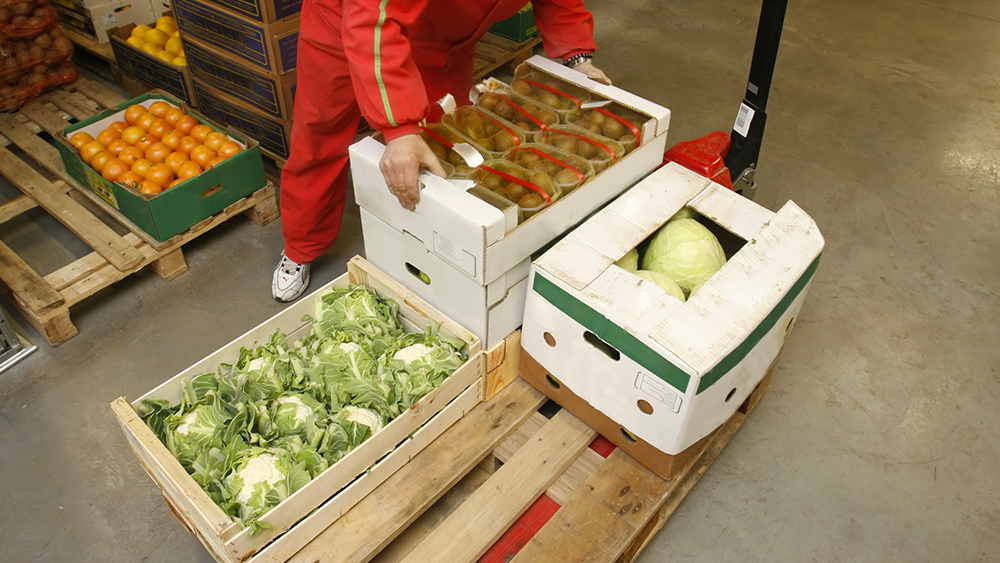Only in America: Farmers destroy produce, while food prices soar and thousands rely on food banks for their next meal
06/01/2020 / By Tracey Watson

Americans are hungry and food prices are soaring, but this is most certainly not because of a shortage of available meat and produce.
In fact, while one-in-four Americans has had to file for unemployment benefits as a result of the pandemic, and cars line up for miles to get to food banks, farmers are plowing under healthy crops, euthanizing animals, destroying fresh produce, smashing eggs and dumping milk.
Meanwhile, governmental organizations are warning that another pandemic is looming on the horizon: global starvation.
How is this even possible? How can people be going to bed hungry while desperate farmers are forced to destroy perfectly good food?
A perfect storm of industry monopolization, low demand and greed
The reasons are complicated, but supply chain issues caused first by panic buying and then by thousands of workers becoming ill with the coronavirus, low demand as people lose their jobs, and decades of industry monopolization, have collided to create the crisis we are now dealing with. (Related: Huge increase in food demand due to coronavirus sends wholesale egg prices skyrocketing 180%.)
A large contributing issue is the fact that for the first time in decades Americans are eating virtually all their meals at home.
“Before the pandemic, U.S. consumers purchased about a third of their calories and spent over half of their food dollars on food consumed outside of their home – restaurants, fast food, schools, work cafeterias, etc.,” explained Dr. Douglas Jackson-Smith from the School of Environment and Natural Resources at Ohio State University. “The closure of these outlets and stay-at-home orders have radically changed where most Americans buy and consume their food, and the supply chains have been slow to reorganize and respond.”
According to Dan Glickman, Executive Director of the Aspen Institute and former U.S. Secretary of Agriculture, around half of all food produced in the United States is intended for hotels, schools, restaurants and other institutions.
The pandemic has meant that those markets have “effectively closed up,” and the demand for in-home use has simply not bridged the gap.
Experts agree that greed and industry monopolization have also been a huge contributing factor to the country’s current food crisis. (Related: Coronavirus pandemic and ‘rigid’ food system force farmers to waste crops.)
Just four companies control close to two thirds of all U.S. meat production, and a greedy desire to increase profits by centralizing food production has proven disastrous during the COVID-19 pandemic. When workers at these facilities become ill and a plant has to be shut down, the food supply of millions of people is affected.
As the pandemic shut down one food facility after another, and the cost of freight skyrocketed — making it even harder to move food across the country — food prices increased by the highest amount in close to 50 years in April.
Meanwhile, more and more people have lost their jobs or have had to take pay cuts, making it increasingly difficult for them to feed their families, while helpless farmers have been forced to destroy perfectly good food.
For some farmers, it has taken less mental anguish to kill their animals and decimate their crops than to simply standby as they suffer and rot away as the summer approaches. The stark images on social media of dumped potato mountains and fresh milk gushing into the earth has been especially haunting given that food banks, according to Feeding America, have experienced a 70 percent uptick in demand since the virus took hold and millions lost their livelihoods.
It is almost impossible to comprehend a situation in which families go to bed hungry while farmers destroy food, but comprehend it we must, because it is simply the way it is right now.
Learn more about the collapse of our food supply at Collapse.news.
Sources for this article include:
Tagged Under: Collapse, coronavirus, covid-19, farming, farms, food banks, food collapse, food prices, food shortages, food supply, freight, greed, meat, monopolization, produce, starvation, unemployment
RECENT NEWS & ARTICLES
COPYRIGHT © 2017 PREPAREDNESS NEWS



















